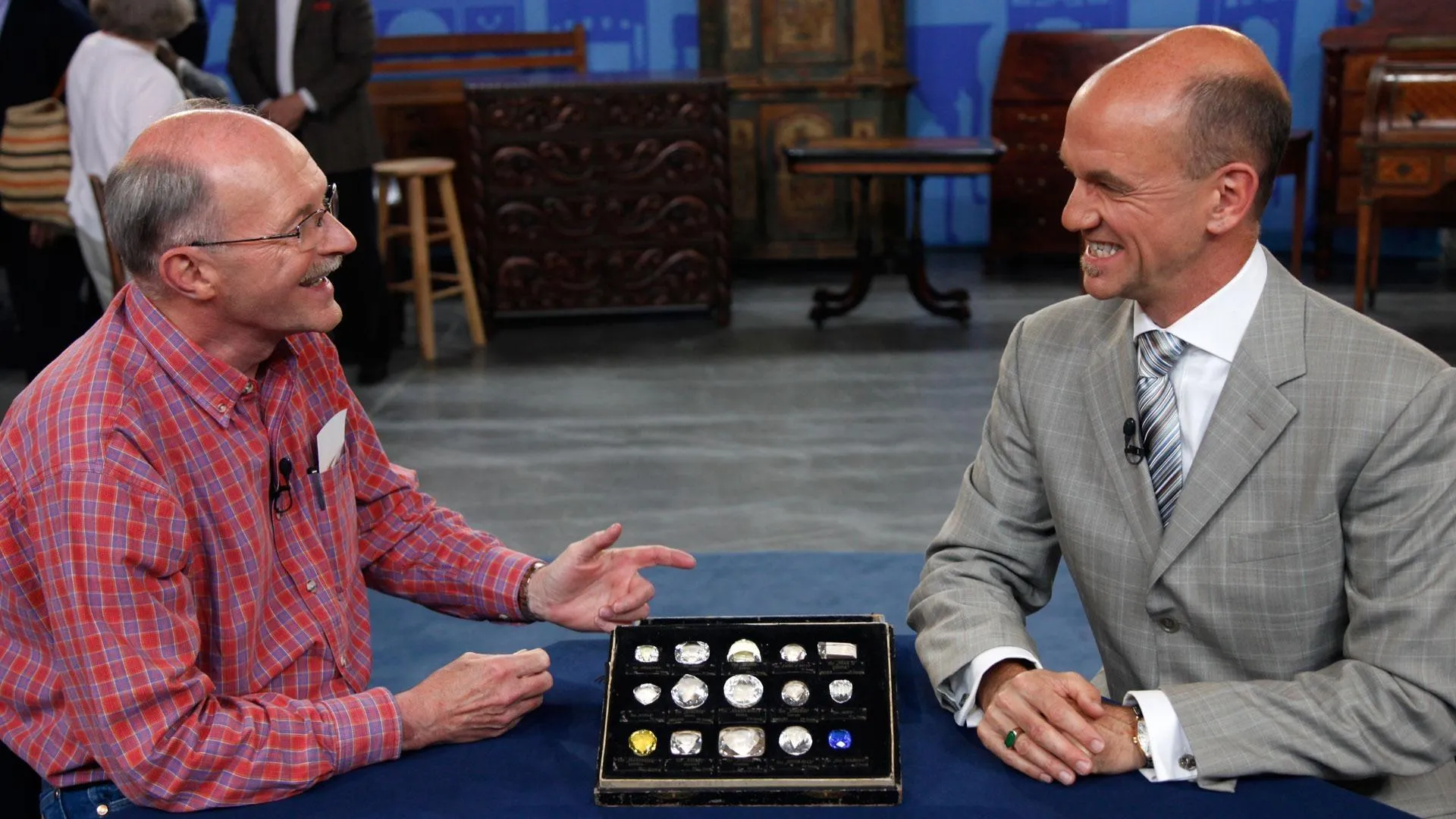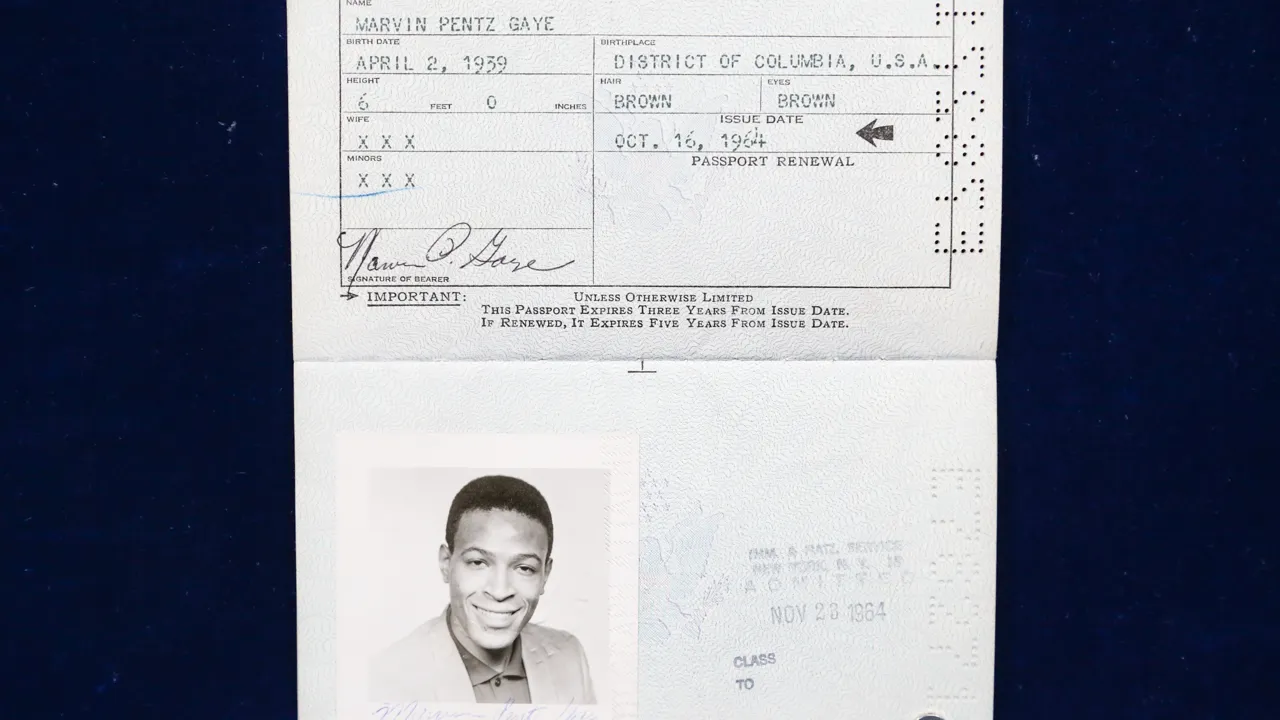GUEST: She is a Webber Singing Doll from 1882. She belonged to my grandmother, who was born in 1883. My grandparents owned a grocery store, and one night, someone came in and took the doll, and my grandma and her folks were lucky enough to find her in the alley. Her hands had been cut off, as well as her hair, and my grandmother resewed her shoulders.
APPRAISER: What you have here is indeed a Webber Singing Doll. It has wonderful patent marks on the back of the doll. Here it says "The Webber Doll." There's a U.S. patent, there's a Brussels patent, there's a French patent. The doll was actually assembled in Germany. And on the front, it says "I sing sweet bye and bye." You demonstrated, uh, to me how the doll sings, and I'm wondering if you could do that for us.
GUEST: Absolutely, I'd love to. (doll whistling)
APPRAISER: The whistling sound is made by a bellows, and to have the doll still working is very rare. The doll has a papier-m‚chÈ head and glass inset eyes. The wig, although you were disappointed it had been trimmed many years ago, it still has its original wig, which is better than having no wig. It has kid leather gloves, or arms-- they were sewn in-- and your grandmother did a wonderful job sewing them back on. Original shoes, original underwear. This was the original dress that was on the doll. But then some family member made several other pieces that are over here.
GUEST: What is she stuffed with?
APPRAISER: Usually they're stuffed, stuffed with horsehair. On today's retail market, the doll would sell between $800 and $1,200. Now, the interesting thing about that is, it's a very rare doll, very rare, but rarity doesn't always translate into mega dollars, so it's a modest retail for what dolls do sell for on the market today.
GUEST: Okay, thank you very much.
APPRAISER: Okay? Thank you for bringing it.












